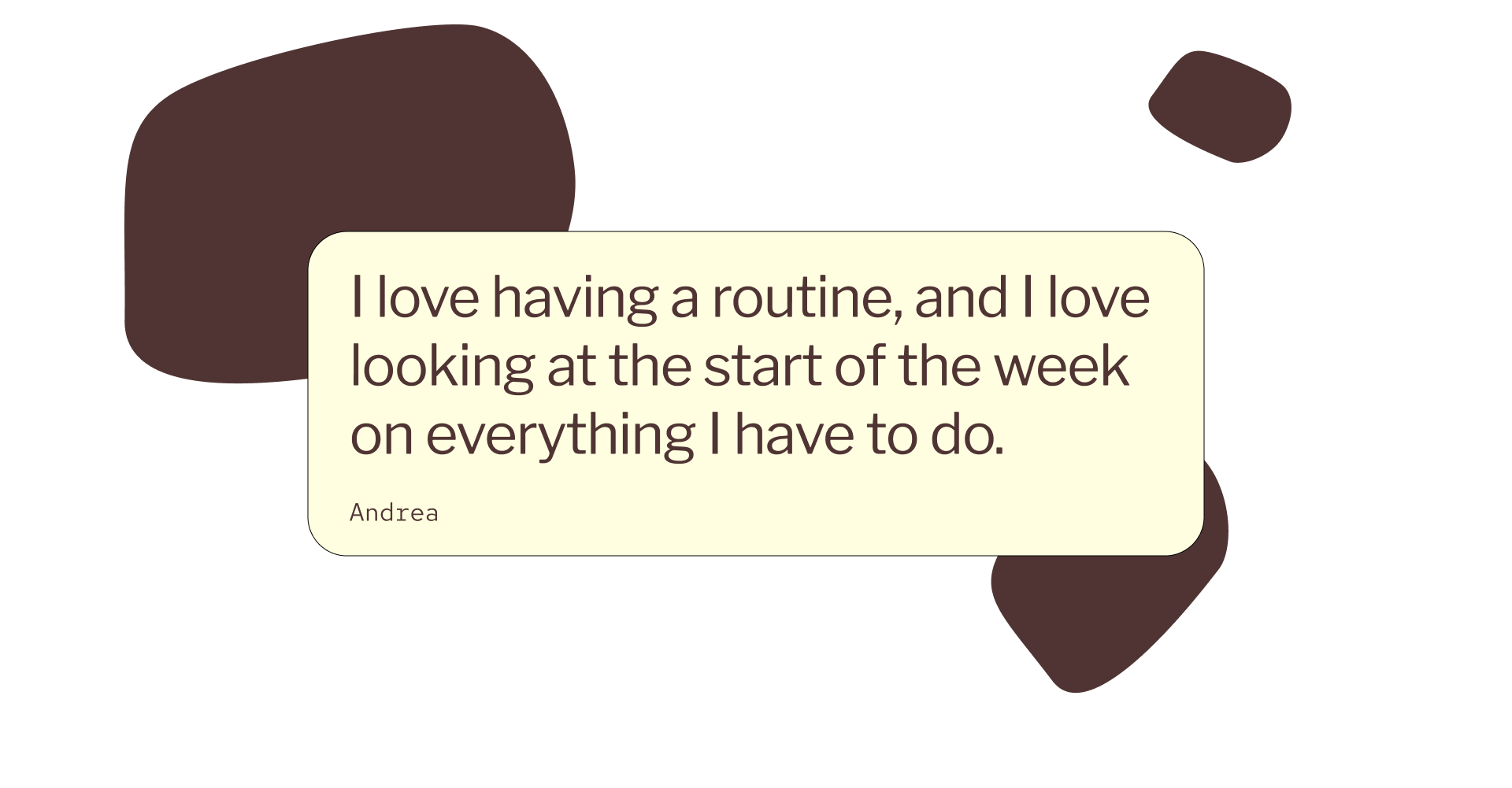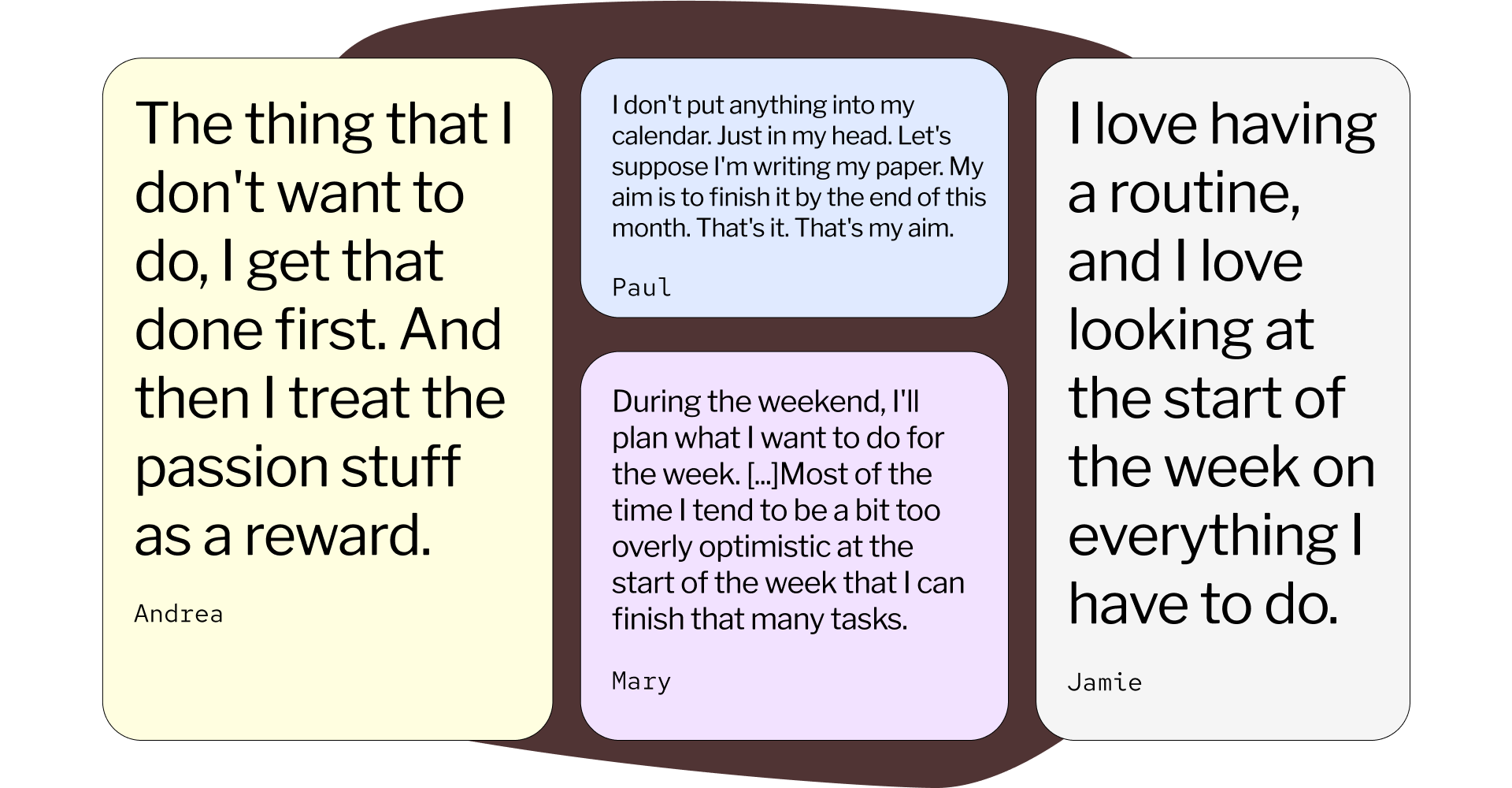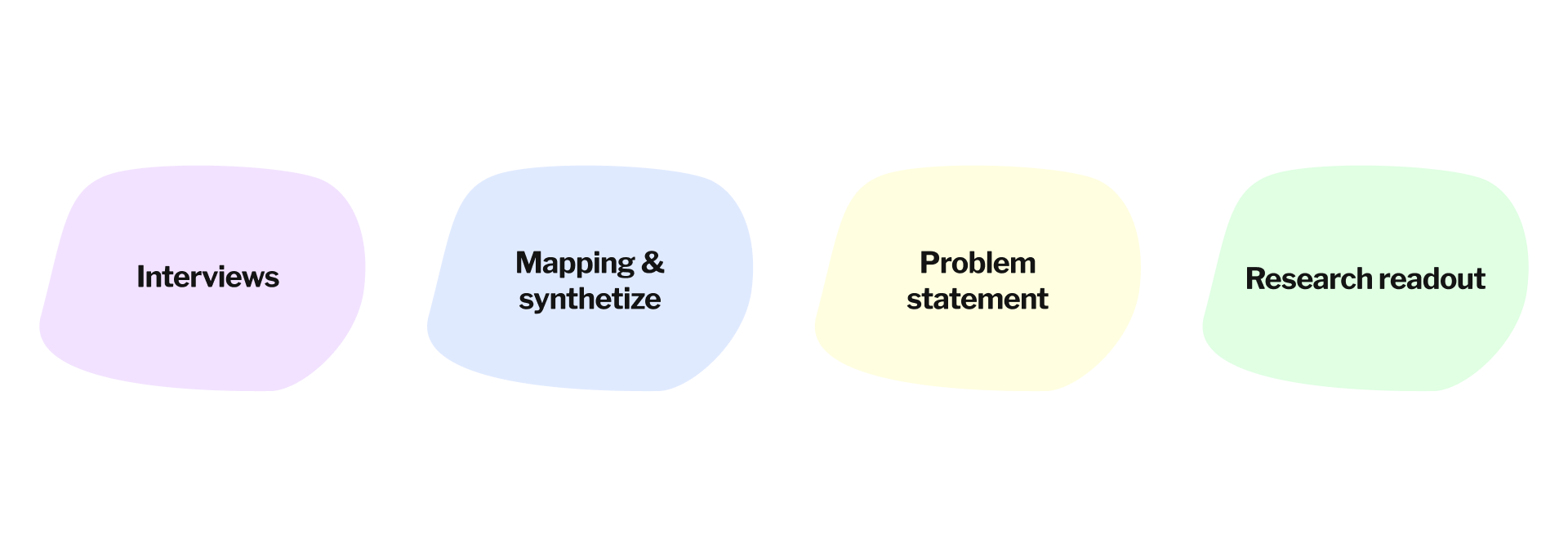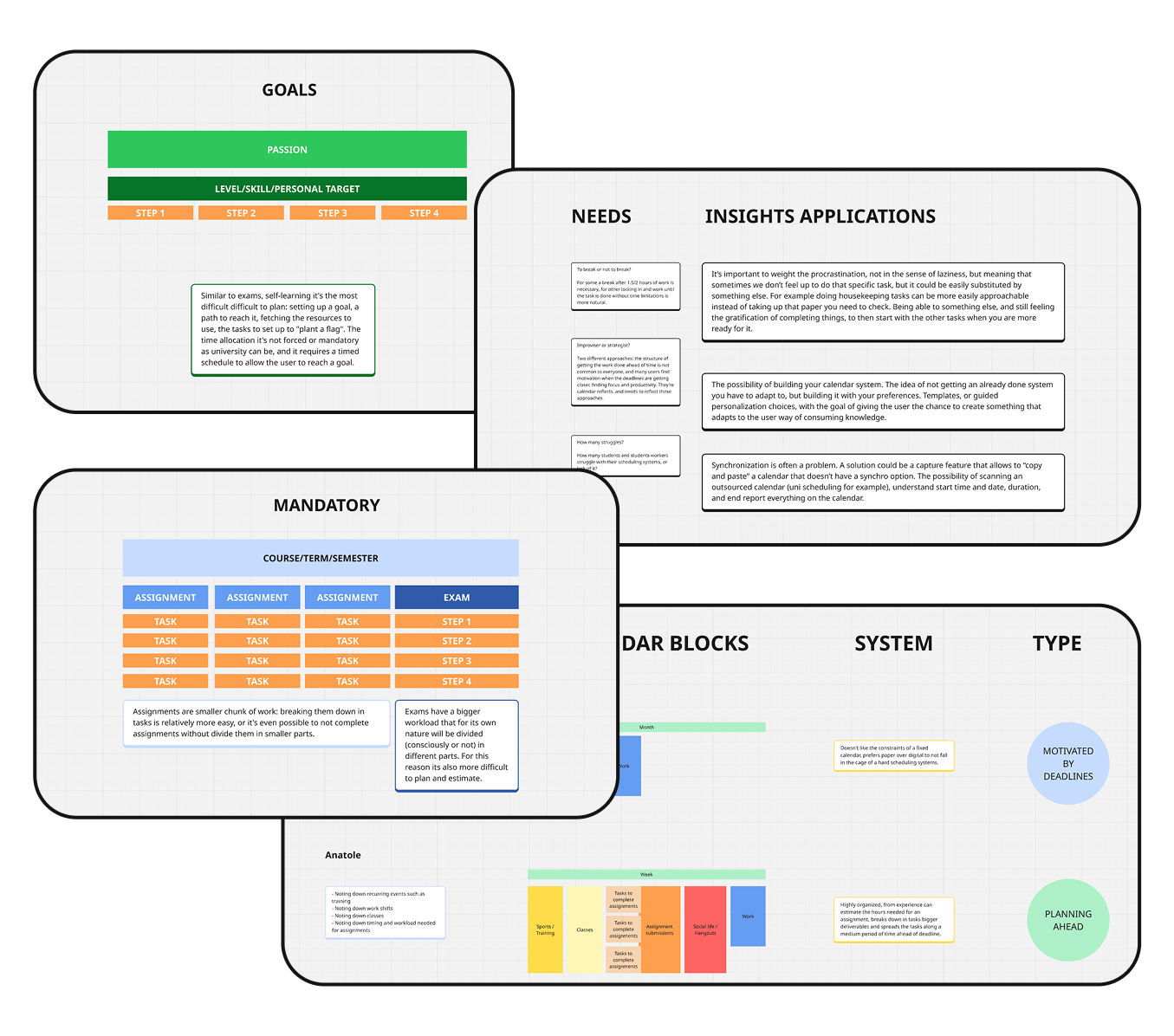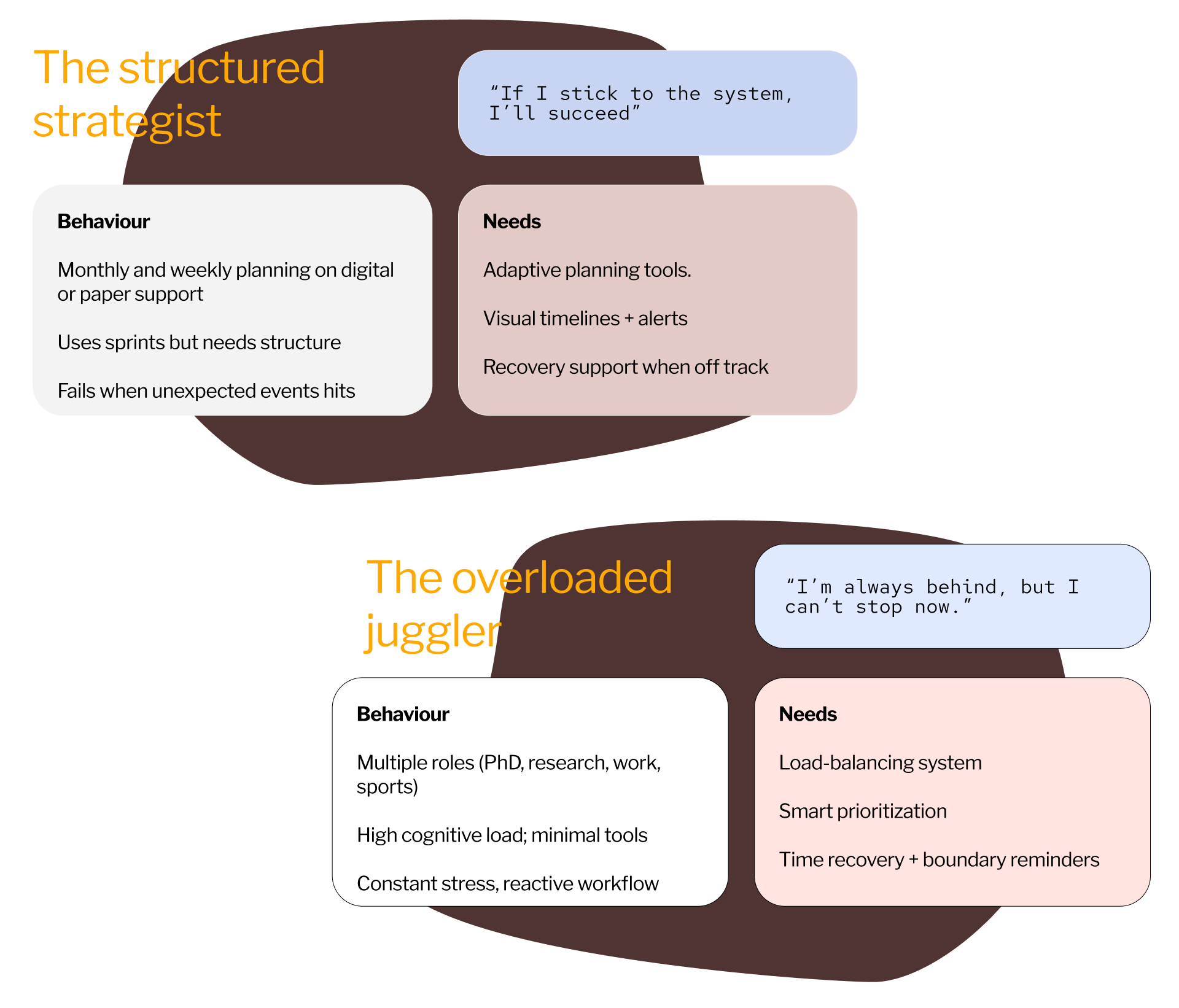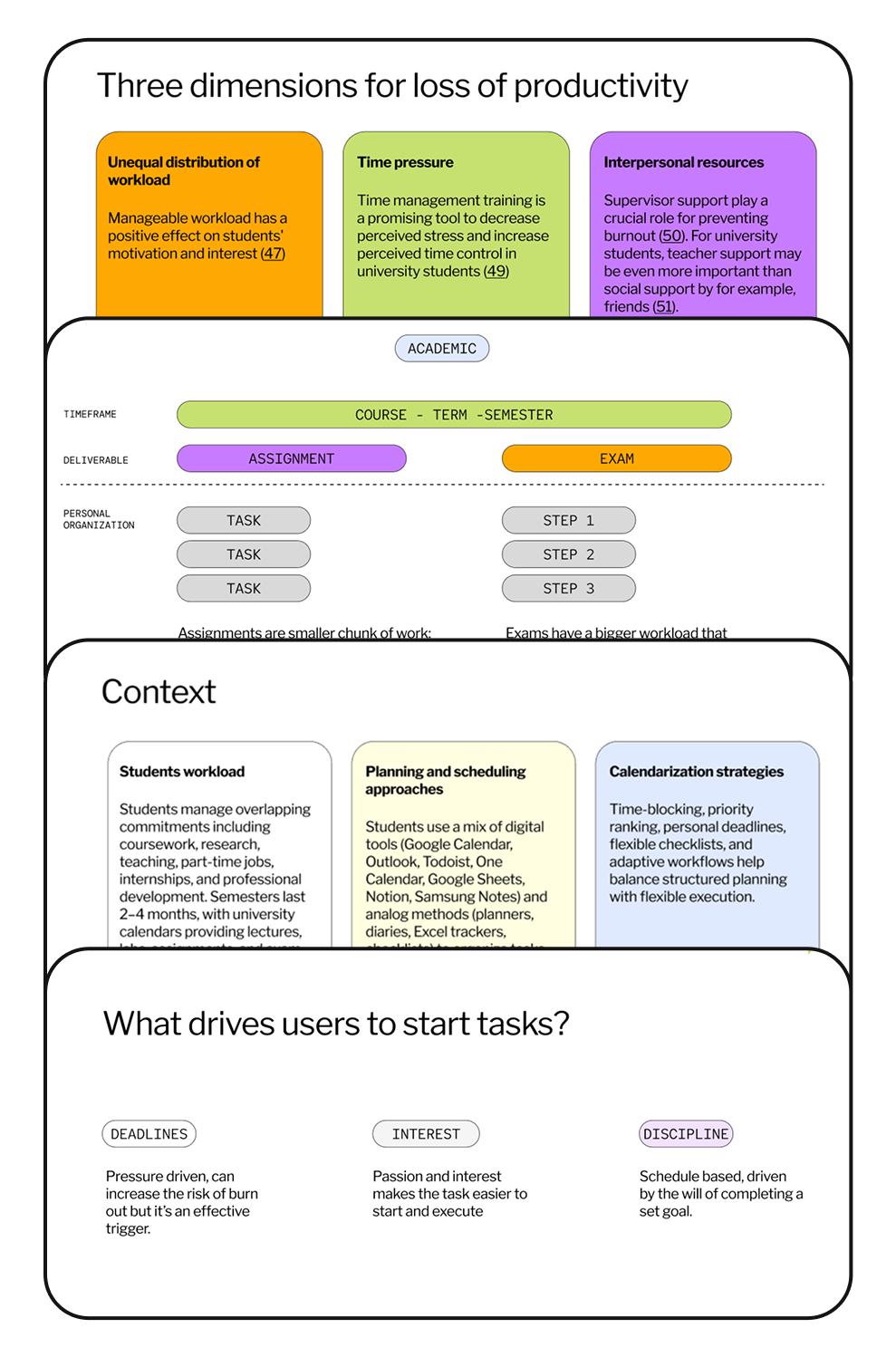Students and early professionals juggle academic work, applications, and personal learning. Tidalic aimed to act as a personal learning concierge, scheduling resources into adaptive plans.
I re-analyzed past interviews, conducted 4 new ones, and distilled findings into personas and How Might We questions.
Key insights: fragmented tools, unpredictable deadlines, and different planning archetypes.
Impact: Delivered personas and opportunity framing, enabling Tidalic to position itself at a conference and clarify product direction.
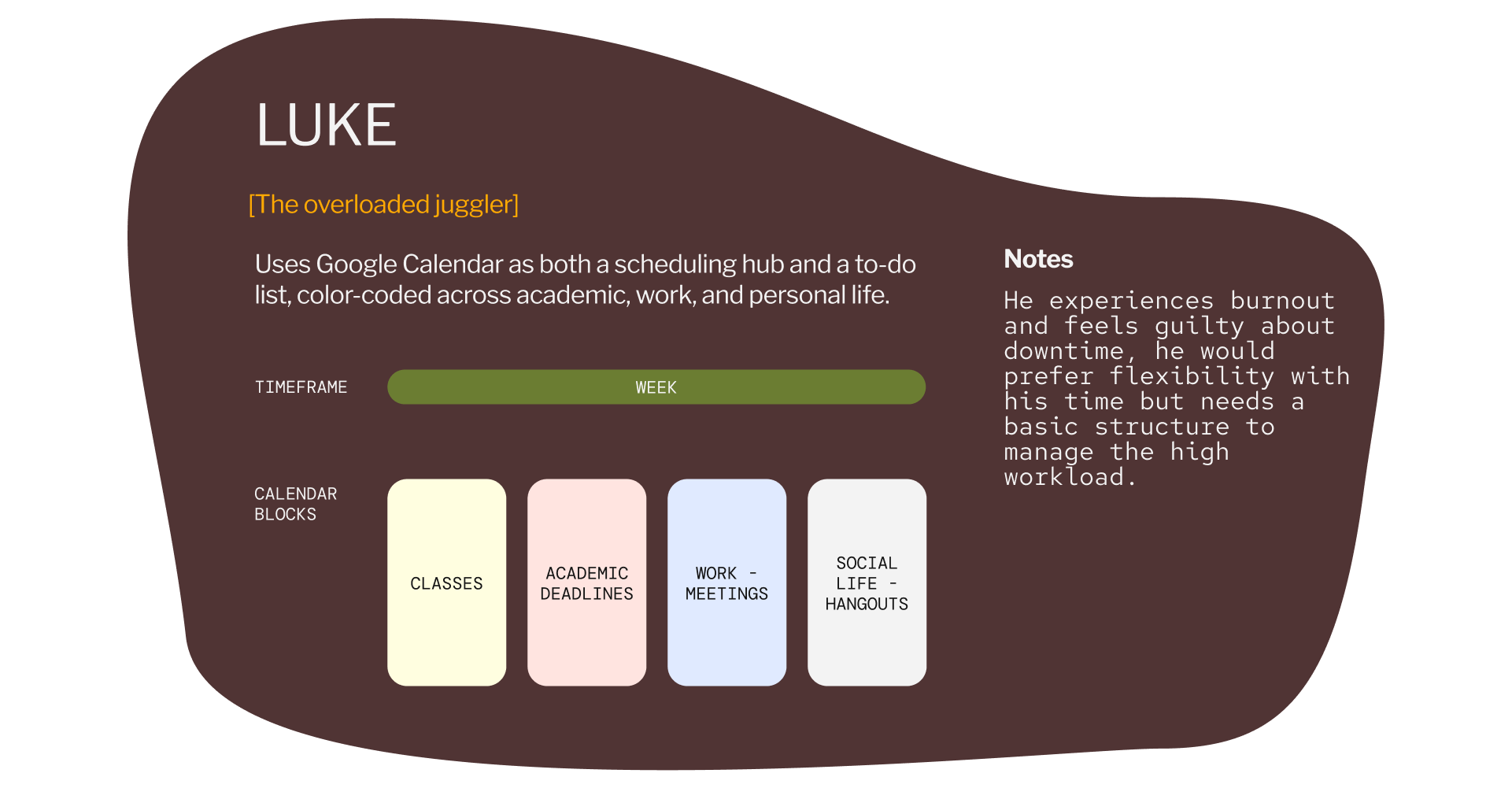
Interview summary
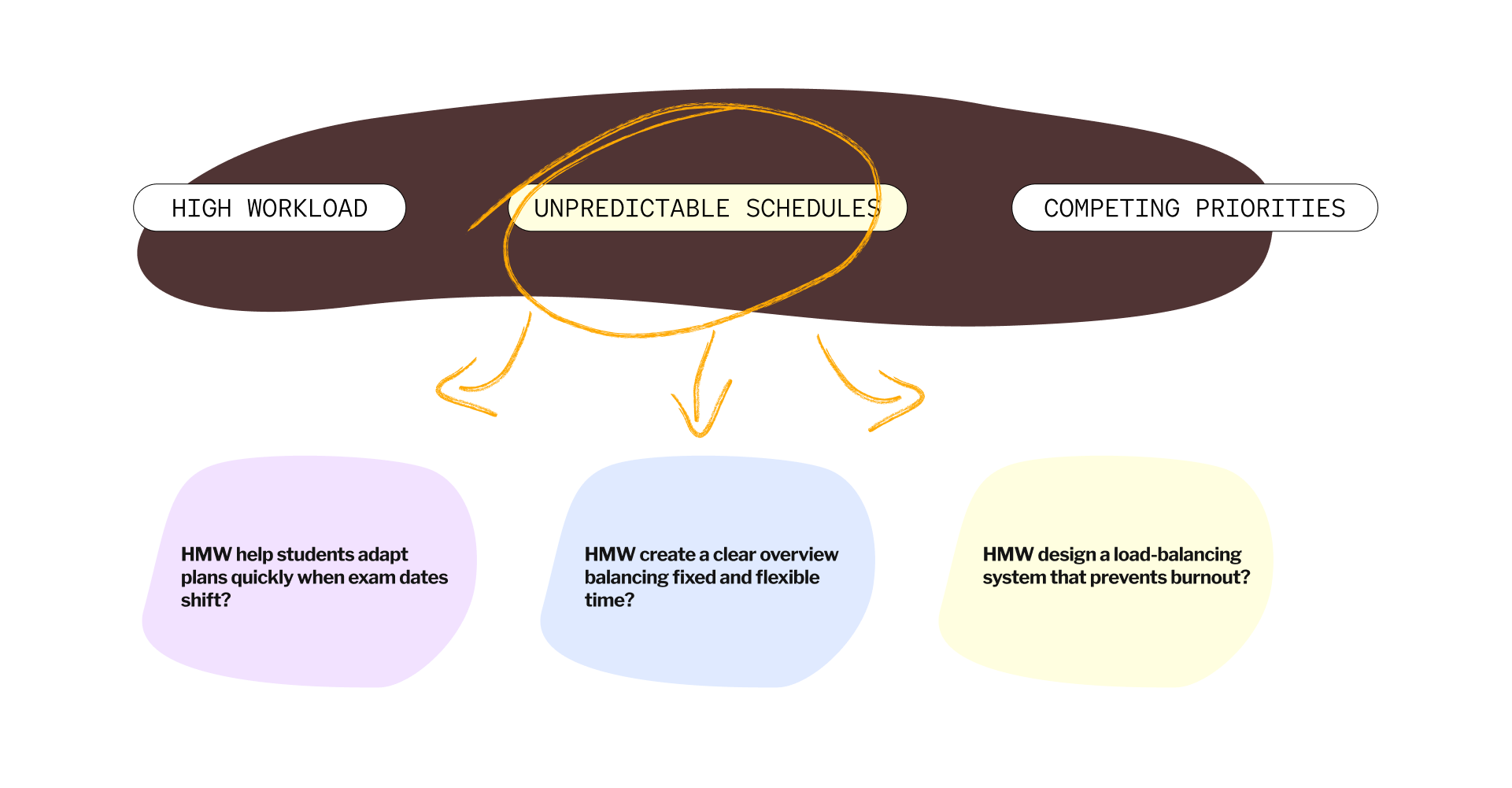
Areas of opportunity and HMW questions

